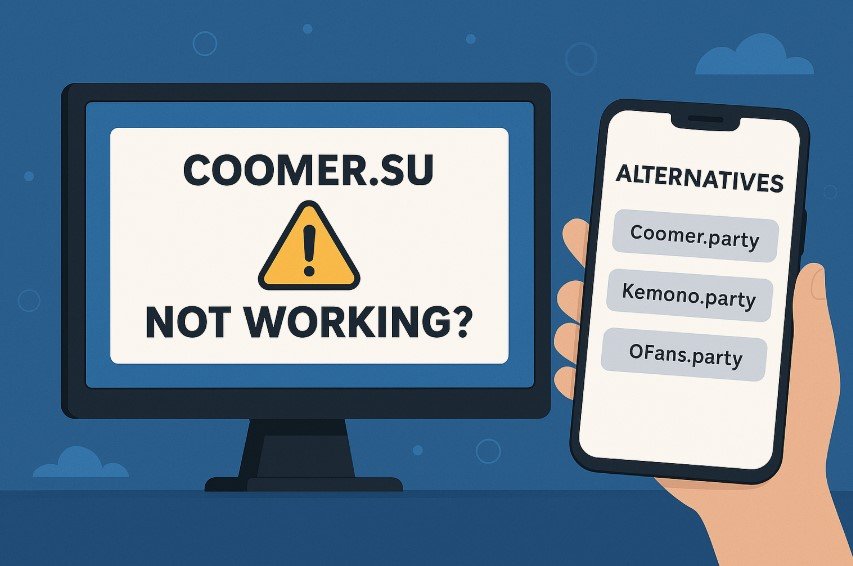Effective document management is crucial for any law practice. The ability to handle legal documents efficiently impacts not only the accuracy of legal work but also the speed and quality of client service. From case files and contracts to court submissions and discovery materials, managing a vast array of documents is a daily reality for legal professionals. By implementing smart document management strategies, law firms can streamline their operations, enhance productivity, and ensure compliance. This article provides practical tips for managing legal documents effectively, emphasizing the importance of tools such as court bundling software and other innovative solutions.
-
Leverage Court Bundling Software for Efficient Court Preparation
Court bundling software is a specialized tool designed to organize and compile documents for court proceedings. It simplifies the process of preparing court bundles, ensuring that all necessary documents are formatted, indexed, and presented according to court requirements. TrialView is one expert provider of court bundling software.
How Court Bundling Software Enhances Document Management:
- Streamlined Document Compilation: Court bundling software automates the process of compiling and organizing documents into court bundles. This reduces the time and effort needed to prepare for court, allowing legal professionals to focus on case strategy rather than administrative tasks.
- Consistent Formatting and Compliance: The software ensures that all documents are formatted consistently and comply with specific court guidelines. Automatic pagination, indexing, and numbering minimize the risk of errors and improve the presentation of documents in court.
- Easy Updates and Modifications: Legal cases often require updates to court bundles. Court bundling software allows for quick and easy modifications, enabling legal teams to add, remove, or update documents without starting from scratch. This flexibility ensures that court bundles remain current and accurate.
- Digital Presentation: Court bundling software supports the digital presentation of documents, making it easy to present bundles electronically using tablets or laptops. This not only reduces reliance on paper but also enhances the ability to navigate documents efficiently during court proceedings.
How to Implement Court Bundling Software:
- Select the Right Software: Choose court bundling software that is compatible with your law firm’s needs and integrates with your existing document management systems. Look for features such as easy document import, automatic formatting, and secure storage.
- Train Your Team: Provide training to legal professionals on how to use the software effectively. Ensure that team members understand how to compile, organize, and present digital court bundles.
- Regularly Update Bundles: Use the software to keep court bundles up-to-date with the latest documents and revisions. Regular updates ensure that all relevant information is included and accurately presented.
-
Adopt a Digital-First Approach to Document Management
Transitioning to a digital-first approach in document management can significantly improve efficiency and accessibility. Digital documents are easier to organize, search, and share, reducing the reliance on physical paperwork and streamlining operations.
Benefits of a Digital-First Approach:
- Improved Accessibility: Digital documents can be accessed from any device with an internet connection, allowing legal professionals to work remotely and collaborate with colleagues and clients. This accessibility enhances flexibility and responsiveness.
- Enhanced Searchability: Digital documents can be organized and tagged with relevant keywords, making them easy to search and retrieve. Advanced search functionalities in document management systems allow legal professionals to find specific information quickly.
- Reduced Physical Storage Needs: Moving to digital documents reduces the need for physical storage space, eliminating the clutter and costs associated with maintaining paper files. Digital storage also minimizes the risk of document loss or damage.
- Easier Compliance and Auditability: Digital documents can be tracked and audited more easily than paper documents. Audit trails in document management systems provide a clear history of document access, changes, and approvals, supporting compliance efforts.
How to Implement a Digital-First Approach:
- Digitize Existing Documents: Start by scanning and digitizing existing paper documents. Use document scanning and Optical Character Recognition (OCR) technology to convert physical documents into text-searchable digital files.
- Use Cloud Storage: Store digital documents in cloud storage solutions that offer secure access, scalability, and collaboration features. Cloud storage ensures that documents are backed up and accessible from anywhere.
- Organize Digital Files: Develop a clear folder structure for organizing digital documents. Use consistent naming conventions and tags to categorize documents by client, case, or document type.
- Implement Digital Signatures: Adopt digital signature tools to facilitate the signing of legal documents electronically. Digital signatures enhance efficiency and provide a secure way to obtain signatures without the need for physical paperwork.
-
Use Legal-Specific Document Management Solutions
Legal-specific document management solutions are designed to meet the unique needs of law firms. These solutions offer features tailored to legal professionals, such as case management integration, compliance tracking, and specialized document workflows.
Benefits of Legal-Specific Document Management Solutions:
- Integration with Legal Software: Legal-specific document management solutions integrate seamlessly with other legal software, such as case management systems, billing systems, and e-discovery tools. This integration streamlines workflows and enhances efficiency.
- Compliance Tracking: Legal-specific solutions often include compliance tracking features that help law firms adhere to regulatory requirements and ethical standards. Compliance tracking ensures that documents are managed according to legal and industry guidelines.
- Customized Workflows: Legal-specific document management solutions allow for the customization of workflows to match the unique processes of a law firm. Customized workflows enable legal teams to automate routine tasks and ensure consistency across cases.
- Precedent Libraries: Many legal-specific solutions offer features for creating and managing precedent libraries. Precedent libraries store templates and past case documents that can be referenced for future cases, enhancing knowledge management.
How to Implement Legal-Specific Document Management Solutions:
- Assess Your Needs: Evaluate the specific needs of your law firm to determine which features are most important. Consider factors such as the size of your firm, types of cases handled, and compliance requirements.
- Select the Right Solution: Choose a legal-specific document management solution that aligns with your firm’s needs. Look for features such as integration capabilities, compliance tracking, workflow customization, and user-friendliness.
- Train Your Team: Provide training on how to use the legal-specific solution effectively. Ensure that all team members understand how to use the features and integrate the solution into their daily workflows.
- Monitor and Adjust: Regularly review how the document management solution is being used and make adjustments as needed. Solicit feedback from team members to identify areas for improvement and optimize usage.
-
Develop and Implement Document Retention Policies
Effective document management includes establishing clear document retention policies. These policies define how long documents should be retained and when they should be securely disposed of. Adhering to document retention policies helps law firms manage their information effectively and comply with legal and regulatory requirements.
How to Develop Document Retention Policies:
- Identify Retention Requirements: Determine the legal and regulatory requirements for document retention specific to your practice area and jurisdiction. Different types of documents may have different retention periods.
- Categorize Documents: Categorize documents by type, such as contracts, client correspondence, court filings, and discovery materials. Assign retention periods to each category based on legal requirements and business needs.
- Establish Disposal Procedures: Define procedures for the secure disposal of documents that have reached the end of their retention period. Ensure that disposal methods protect sensitive information and prevent unauthorized access.
- Regularly Review and Update Policies: Document retention policies should be reviewed and updated regularly to reflect changes in laws, regulations, and business practices. Keep staff informed of any updates to the policies.
How to Implement Document Retention Policies:
- Communicate Policies to Staff: Ensure that all staff members are aware of the document retention policies and understand their responsibilities. Provide training on how to follow the policies and handle documents appropriately.
- Automate Retention Management: Use document management systems with automated retention management features. These systems can track document retention periods, send alerts when documents are due for review, and automate disposal.
- Monitor Compliance: Regularly monitor compliance with document retention policies. Conduct audits to ensure that documents are being retained and disposed of according to the policies.
-
Facilitate Collaboration with Secure Sharing Tools
Collaboration is essential in legal work, and effective document management includes facilitating secure collaboration among team members, clients, and external partners. Secure sharing tools enable legal professionals to share documents and work together while protecting sensitive information.
How Secure Sharing Tools Enhance Collaboration:
- Real-Time Collaboration: Secure sharing tools allow multiple users to view, edit, and comment on documents in real time. This capability is particularly valuable for collaborative drafting, reviewing legal briefs, and working on case strategies.
- Controlled Access: Sharing tools with access controls ensure that only authorized individuals can access shared documents. Access permissions can be customized to provide view-only or editing rights, depending on the user’s role.
- Audit Trails: Secure sharing tools often include audit trail features that track document access, changes, and sharing history. Audit trails provide transparency and accountability, helping legal professionals monitor document handling.
- Secure Communication: Sharing tools with built-in communication features allow legal teams to discuss documents, share feedback, and coordinate tasks securely. Secure communication enhances collaboration while maintaining confidentiality.
How to Implement Secure Sharing Tools:
- Select Secure Sharing Tools: Choose sharing tools that offer robust security features, such as encryption, access controls, and audit trails. Ensure that the tools comply with data protection regulations and legal standards.
- Integrate with Document Management Systems: Use sharing tools that integrate seamlessly with your document management systems. Integration streamlines workflows and enhances document security.
- Establish Sharing Protocols: Develop protocols for sharing documents securely. Define guidelines for sharing sensitive documents, setting access permissions, and monitoring sharing activity.
- Train Staff: Provide training on how to use secure sharing tools effectively. Ensure that team members understand the importance of secure document sharing and follow established protocols.
Conclusion
Effective management of legal documents is essential for the success and efficiency of any law practice. By leveraging tools such as court bundling software, adopting a digital-first approach, implementing robust security measures, using legal-specific document management solutions, developing document retention policies, and facilitating secure collaboration, legal professionals can ensure that their documents are well-organized, accessible, and protected.
These strategies not only improve productivity and efficiency but also enhance client service, compliance, and overall effectiveness. In a profession where attention to detail and precision are paramount, effective document management is key to delivering high-quality legal services and achieving successful outcomes. By prioritizing the management of legal documents, law professionals can create a more streamlined, organized, and secure practice, positioning themselves for success in an increasingly digital and competitive legal landscape.





